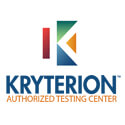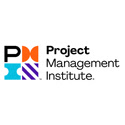Enabling Office 365 Services (70-347)
About This Course
The coursework for Enabling Office 365 Services helps you prepare for the quintessential 70-347 exam, which is one amongst the two necessary exams to achieve Microsoft Office 365 MCSA certification. The coursework helps to monitor, manage, configure and plan client devices, SharePoint Online, Skype for Business and Microsoft Exchange Online.
This course is aimed at IT professionals involved in planning, evaluating, operating and deploying Microsoft Office 365 services including its requirements, supporting technologies and dependencies.
Who Should Attend This Course
IT professionals
Why This Course
- The course prepares you for MS 70-347 exam.
- Having an MCSA Office 365 certification will qualify you to work as a SaaS (Software-as-a-Service) or cloud apps administrator with focus on Office 365 products such as Skype for Business, SharePoint and Exchange Online.
- One of the necessary two exams toward achieving MCSA Office 365 certification.
- Managing end-user and client devices
- Planning and enabling Skype for Business and Exchange Online
- Provisioning SharePoint site collections
- Configuring Skype and Exchange Online
Course Objectives
This course aims to impart understanding and knowledge on the below-mentioned key job functions:
- Manage end-user and clients devices
- Manage user-driven deployments
- Manage IT deployments
- Set up reporting and telemetry
- Provision SharePoint site collections
- Configure external sharing
- Plan collaboration solution
- Configure Skype for Business and Exchange for end users
- Configure email addresses for users
- Manage external resources, groups and contacts
- Configure archive policies
- Configure communication settings for Skype for Business
- Manage anti-spam and anti-malware policies
- Recommend mailbox migration
- Manage Skype for global communications
Course Prerequisites
Professionals interested for this course should have some understanding of Office 365 tenant and practices to navigate within the Office 365 Admin Center, SharePoint Online, Skype for Business and Exchange Online Admin Center. You should also possess some knowledge of Azure Active Directory, MS Office 365 ProPlus, etc.
Course Benefits
Some of the core benefits of Enabling Office 365 Services are as follows:
- Prepares you for 70-347 exam
- Managing end-user and client devices
- Planning and enabling Skype for Business and Exchange Online
- Provisioning SharePoint site collections
- Configuring Skype and Exchange Online





























